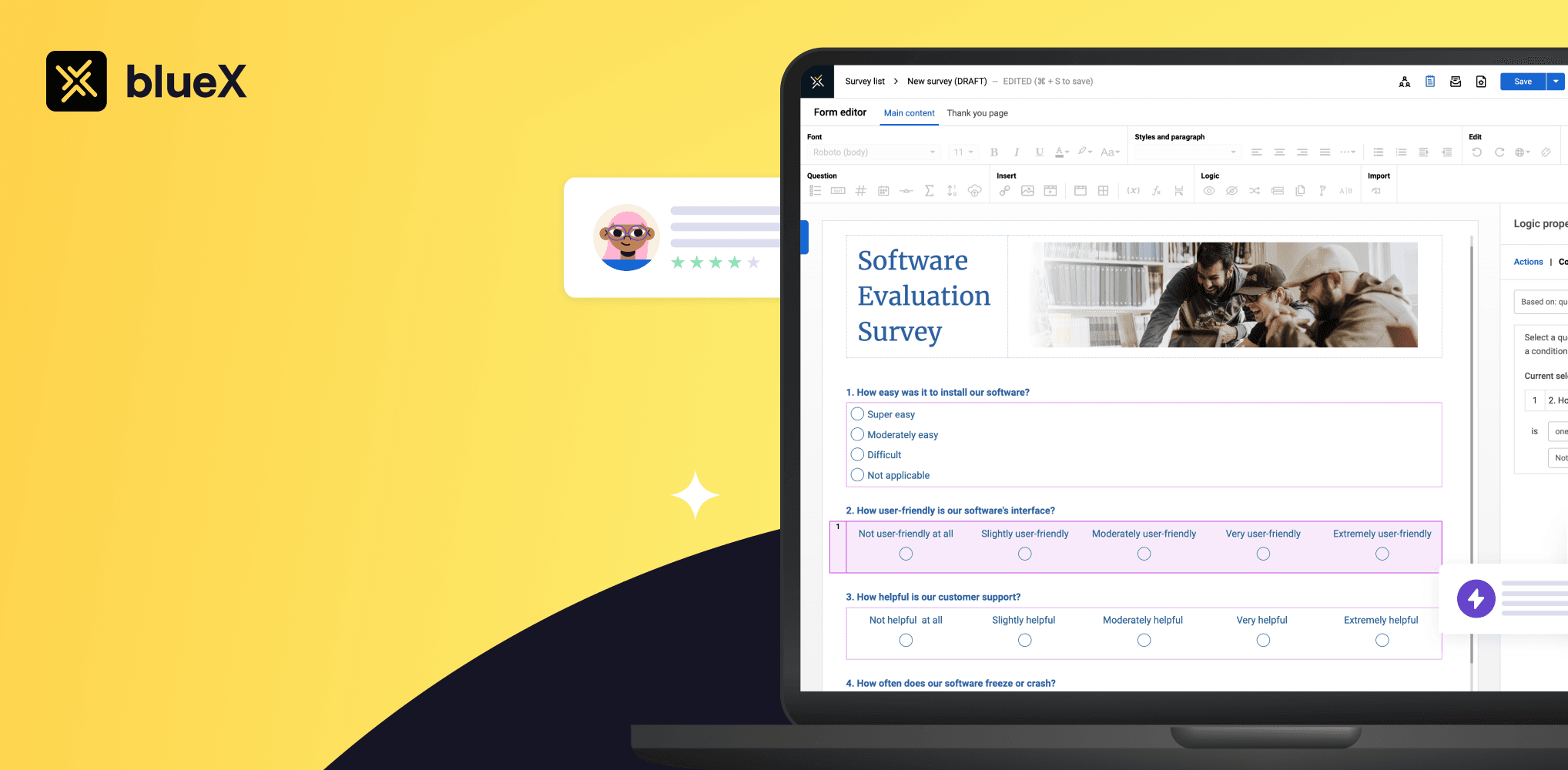Watch the Explorance World 2025 Opening Keynote
"Feedback as a Superpower" by Founder & CEO Samer Saab
Watch Now Explorance Blog
Keep up to date with the latest information, tips and tricks, and more about People Insights.
Featured Articles

Course Evaluation Examples: Must-Have Templates & Questions to Improve Teaching and Student Engagement
Discover course evaluation templates, sample questions, and best practices to collect better student feedback, improve teaching effectiveness, and boost learning outcomes.
15 min read

5 Key Takeaways From Student Voices in Higher Education 2025
Discover 5 key insights from the 2025 Student Voices in Higher Ed Conference in London—AI, surveys, student feedback, and more.
6 min read

How to Create Accessible Student Surveys That Meet Higher Education Accessibility Standards
Learn how to design student surveys that follow higher ed accessibility standards and ensure inclusive participation.
10 min read
Latest Articles

Explorance World 2025: Key Takeaways That Signal the Future of Feedback
7 min read

Introducing BlueX: The New Survey Tool That Does So Much More
Create surveys like never before. BlueX blends simplicity, collaboration, and control into one powerful feedback platform.
4 min read

Course Evaluation Examples: Must-Have Templates & Questions to Improve Teaching and Student Engagement
Discover course evaluation templates, sample questions, and best practices to collect better student feedback, improve teaching effectiveness, and boost learning outcomes.
15 min read

5 Key Takeaways From Student Voices in Higher Education 2025
Discover 5 key insights from the 2025 Student Voices in Higher Ed Conference in London—AI, surveys, student feedback, and more.
6 min read

10 Student Retention Strategies for Higher Education Institutions
In this blog, discover how to successfully engage and retain students with proven strategies from higher education institutions.
7 min read

How To Conduct A 360-degree Feedback Survey: A Comprehensive Guide
Learn how 360-degree feedback improves leadership, collaboration, and self-awareness with actionable step and best practices for success.
5 min read

How to Use Surveys to Measure and Track Crucial Educational Gains
Read this blog to learn more about efficiently tracking educational gains to impact the student experience by enhancing various skills and work readiness.
5 min read

How to Transform Your Employee Learning Data into Effective, Actionable Insights
Go beyond understanding your learning and development initiatives for better growth, efficiency, and employee engagement.
8 min read

How to Respond to Bad Feedback: Building a Culture of Trust in Higher Education
Learn how higher education leaders handle negative feedback, foster trust, promote psychological safety, and turn critiques into growth opportunities.
5 min read

Strategies for the Responsible Use of AI in Higher Education Learning
Learn how higher education responsibly integrate AI, balance innovation & ethics to improve learning, simplify processes, & support students and educators.
5 min read

How to Safeguard Psychological Safety with Automated Redaction in Higher Education
In this blog, learn more about automated redaction softwares and how they support psychological safety for better feedback processes,
6 min read

Benefits of 360 Assessments Across the Deployment Lifecycle
This blog delves into practical solutions to address the ever-growing skills gap, including insights on effectively implementing a 360 assessment process.
7 min read

Newsletter
Stay connected with the latest updates and news from Explorance.
Copyright 2025 © Explorance Inc. All rights reserved.